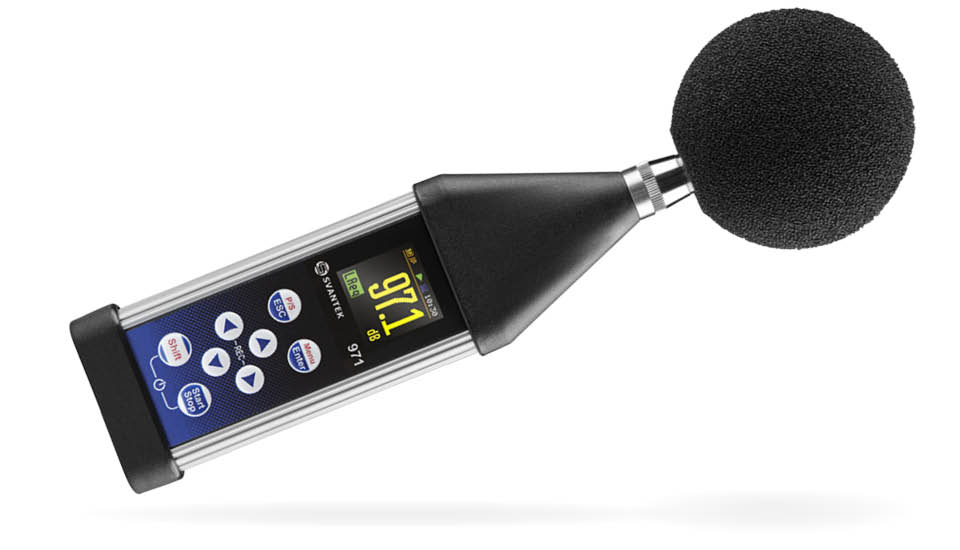A compact and highly accurate sound level meter for building acoustics, occupational noise, and STIPA measurements. The SV 971A is the smallest Class 1 sound level meter on the market, offering a wide linear range from 27 to 140 dB in a single span. Fully compliant with BS and ISO standards, it supports RT60 and sound insulation tests via a dedicated mobile app, making it the ideal tool for acoustic consultants and H&S professionals.



The SV 971A is widely regarded as one of the best Class 1 sound level meters for professionals in the UK. It fully meets the performance criteria defined in BS EN 61672-1, including linear range, frequency response, and environmental durability. Trusted for its accuracy and compliance, the SV 971A is ideal for any application where noise measurements must meet regulatory and acoustic engineering standards.

Certified Class 1 Precision
Meets BS EN 61672-1:2013 for trusted measurement accuracy

Noise Source Identification
Real-time octave analysis with optional audio recording

Mobile App Integration
Wireless control and reporting for BS EN ISO 16283 insulation tests

Global Standards Compatibility
Conforms to BS EN, ISO, IEC, OSHA and other international guidelines


Meets BS EN 61672-1:2013 for trusted measurement accuracy
Read more

Real-time octave analysis with optional audio recording
Read more

Wireless control and reporting for BS EN ISO 16283 insulation tests
Read more

Conforms to BS EN, ISO, IEC, OSHA and other international guidelines
Read more
The SV 971A sound level meter is designed to make noise measurement easier and faster. It is equipped with all frequency weightings, which allows it to measure sound pressure levels as well as peak sound pressure levels in workplace environments.

Explore how the SV 971A supports façade, airborne and impact sound insulation measurements with high-resolution spectral logging and real-time frequency analysis. From STIPA and RT60 measurements to mobile-guided ISO 16283 workflows, this compact instrument delivers lab-grade results in field conditions.

Occupational Noise
HSE-compliant noise measurements in the workplace
The SV 971A supports UK HSE guidelines and ISO 9612/1999 standards for workplace noise assessments. It’s ideal for measuring exposure, interpreting results, and helping safety professionals protect workers from excessive noise.
Read more
Building Acoustics
BS EN ISO 16283 sound insulation testing made simple
The SV 971A is fully compatible with BS EN ISO 16283 for airborne, impact, and facade sound insulation measurements. With guided workflows and report generation via mobile app, it’s the ideal choice for acoustic consultants and building engineers in the UK.
Read more
STIPA Voice Intelligibility
IEC 60268-compliant testing for PA and voice alarm systems
The SV 971A supports STIPA speech transmission index measurements as per IEC 60268, making it ideal for testing public address and voice alarm systems. The dedicated mobile app helps configure tests, interpret results, and generate compliant reports.
Read more
The SV 971A is a Class 1 Sound Level Meter and Sound Exposure Meter designed for professional use, recognized for its compact size, lightweight, and inclusion of advanced features.
Discover how this advanced device streamlines sound insulation measurements, ensuring precision and compliance with international standards.
Class 1 Sound Level Meter SV 971a
Applications
Hardware Features
Sound measurements features
Please select the file and language version